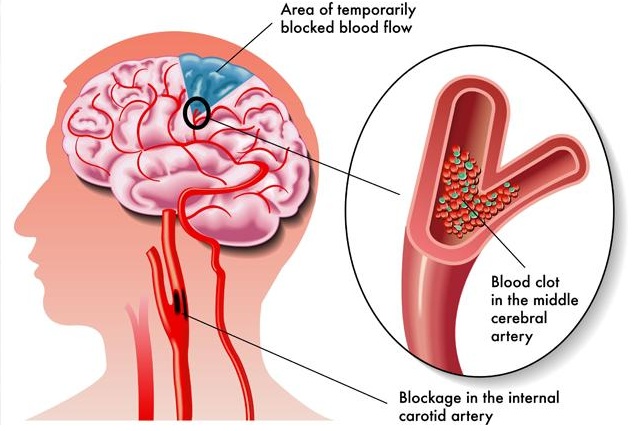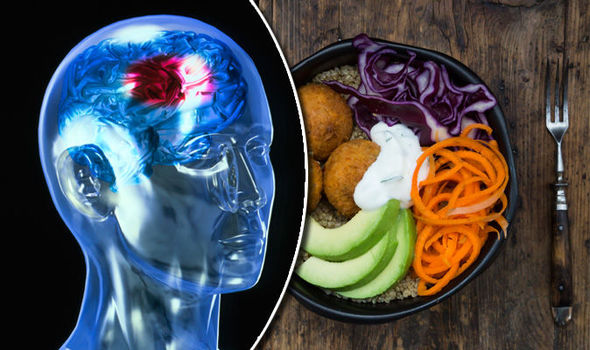Conquering Kidney Disease with the Power of Plants
/The previous blog post was about The Magic of a Whole Food Plant-Based Diet on High Blood Pressure. This week we will focus on another one of the Top 10 Killers of Americans—kidney disease. According to the United States National Center for Health Statistics, 4.9 million adults in the US are diagnosed with kidney disease. This number is equivalent to about 2% of all adults within the country. Each year about 50,000 people die from nephritis, nephrotic syndrome, and nephrosis, which are various forms of kidney disease. [1]
The image shows an illustration of a diseased kidney. [2]
Kidney disease, also known as kidney failure, describes the gradual loss of kidney function. Healthy kidneys filter wastes and excess fluids from your body, which are then excreted through the urine. [2] The Mayo Clinic states that “Diseases and conditions that cause chronic kidney disease include type 1 or type 2 diabetes and high blood pressure. Factors that may increase your risk of chronic kidney disease include diabetes, high blood pressure, heart and blood vessel (cardiovascular) disease, smoking, and obesity.” [2]
The clinic also explains that kidney failure can lead to complications such as “fluid retention, which could lead to swelling in your arms and legs, high blood pressure, or fluid in your lungs, cardiovascular disease, weak bones and an increased risk of bone fractures.” [2]
There is no need to worry though, as kidney failure may be both prevented and treated with a whole food plant-based (WFPB) diet. A great way to help prevent kidney failure is to try and eliminate the risk factors and causes, many of which come from animal foods.
Harvard researchers published a study in the Clinical Journal of American Society of Nephrology, which found that “diets higher in animal protein, animal fat, and cholesterol may be associated with microalbuminuria (MA.)” [3] MA is a term to describe a moderate increase in the level of urine albumin. It occurs when the kidney leaks small amounts of albumin into the urine.
On the left, fat (black) completely fills and plugs the lumen of this postglomerular arteriole in the kidney of a human diabetic patient. On the right, fat (black) of somewhat crystalline nature completely fills and plugs this capillary loop which lies immediately beneath Bowman’s capsule. [5]
In fact, a study published in the American Journal of Physiology-Renal Physiology found that “consumption of animal fat significantly alters kidney structure and function.” [4] This was shown by a study published in The American Journal of Pathology, which showed animal fat clogging up the insides of autopsied human kidneys. [5]
Not only does animal fat contribute significantly to causing kidney disease but so does animal protein. A study published in the journal Nephron compared a vegetable-based diet and an animal-based low-protein diet and found that the “progression of chronic renal failure (CRF) is slower on diets based on soy protein than on diets based on animal protein.” [6]
Graphs show that plant proteins do not stress the kidneys, while animal proteins do.
The study also observed that “Animal protein intake has a profound effect on normal renal function. In acute and chronic studies on normal humans, it induces glomerular hyperfiltration by causing increases in renal blood flow and reducing renal afferent arteriolar vascular resistance, and this is associated with an increase in urinary protein excretion. On the other hand, administration of an equal quantity of vegetable protein does not alter any of these parameters.” [6]
Researchers who published their findings in The Tohoku Journal of Experimental Medicine found that just a few hours after eating a tuna salad sandwich the pressure on the kidneys increased significantly. Quite remarkably after eating a tofu salad sandwich with the same amount of protein, there was no impact on the kidneys in both diabetics and non-diabetics. [7] The animal protein caused inflammation which the plant protein did not.
Another study discovered “Dietary acid load (DAL) is determined by the balance of acid-inducing foods which is rich in animal proteins (such as meats, eggs, and cheese) and base-inducing foods which is rich in fruits and vegetables (such as raisins, apples, peaches, spinach, and cauliflower).” [8]
Contrasted with acidic foods, alkaline foods such as those mentioned above, reduce the accumulation of ammonia in the kidney. They also improve renal function and reduce complications such as muscle wasting, bone disease, and insulin resistance. [9]
Animal foods may lead to tubular toxicity or the damage to small, delicate, urine-making tubes in the kidney. Animal foods tend to be acid-forming, while plant foods are relatively neutral or even alkaline and help counteract the acid. The best way to stop chronic kidney progression may be to simply eat WFPB or at least increase the amount of plant food eaten.
Once again, we can come to the conclusion that a WFPB diet will help greatly prevent kidney failure or even reverse it in some cases. The long-awaited hero that will conquer kidney disease is eating more plants and excluding animal foods altogether!
Sources:
[1] https://www.cdc.gov/nchs/fastats/kidney-disease.htm
[2] https://www.mayoclinic.org/diseases-conditions/chronic-kidney-disease/symptoms-causes/syc-20354521
[3] https://www.ncbi.nlm.nih.gov/pmc/articles/PMC2863979/
[4] https://www.physiology.org/doi/pdf/10.1152/ajprenal.00068.2011
[5] https://www.ncbi.nlm.nih.gov/pmc/articles/PMC1942678/
[6] https://www.karger.com/Article/Abstract/45021
[7] https://www.jstage.jst.go.jp/article/tjem1920/159/2/159_2_153/_pdf/-char/en
[8] https://bmcnephrol.biomedcentral.com/articles/10.1186/1471-2369-15-137
[9] https://www.ncbi.nlm.nih.gov/pubmed/28117137
[10] https://nutritionfacts.org/video/how-not-to-die-from-kidney-disease/

![The image shows an illustration of a diseased kidney. [2]](https://images.squarespace-cdn.com/content/v1/5a15e595f09ca4cdefcbbcaa/1552244318388-OE7VM74X784Z0CIC9OB5/A+Damaged+Kidney)



![The table above shows that blood pressure decreases as age increase in populations following a WFPB diet. [4]](https://images.squarespace-cdn.com/content/v1/5a15e595f09ca4cdefcbbcaa/1551015273159-XJ7OOYWD2DK27KONDHS7/WFPB+Blood+Pressures.png)
![The table above shows that 16 year olds and 70 year olds had the same blood pressures in populations eating WFBP. [5]](https://images.squarespace-cdn.com/content/v1/5a15e595f09ca4cdefcbbcaa/1551016302544-NPIPS9U4YOGUANMK9R1Y/Chinese_WFPB_populations.png)
![The table shows that each step closer to WFPB gives benefits by decreasing both hypertension and diabetes. [7]](https://images.squarespace-cdn.com/content/v1/5a15e595f09ca4cdefcbbcaa/1551016502446-8DPY1Y8DUZA0JMX46RVC/WFPB+Benefits+Hypertension.png)

